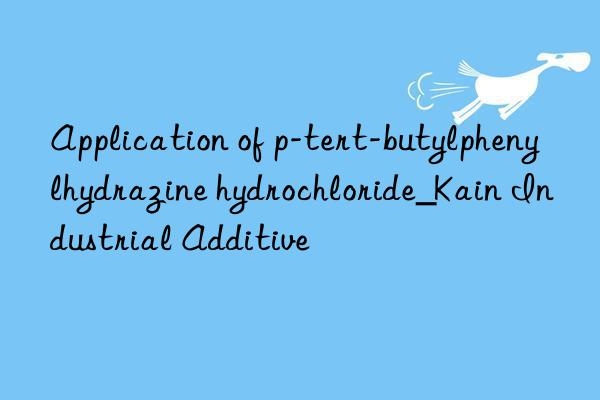
Background and overview[1]
p-tert-Butylphenylhydrazine hydrochloride is a phenylhydrazine derivative and can be used as a pharmaceutical synthesis intermediate.
Preparation[1]
p-tert-Butylphenylhydrazine hydrochloride is prepared as follows: add 1-ethyl-3-(3'-dimethylaminopropyl)carbodiimide (5.87ml) to 4-isopropyl under ice cooling. In a mixture of phenylhydrazine hydrochloride (5.0g), acetic acid (1.84ml), triethylamine (3.73ml) and 1-hydroxybenzotriazole hydrate (40.4mg) in dichloromethane (50ml), then The mixture was stirred at room temperature overnight. After removal of the solvent by evaporation, the residue obtained was partitioned between dilute hydrochloric acid and ethyl acetate. The organic layer was washed successively with aqueous sodium bicarbonate solution, water and brine, dried over magnesium sulfate, and concentrated under reduced pressure. The residue was purified by silica gel column chromatography, eluting with a mixture of dichloromethane and methanol. The fractions containing the target compound were combined and concentrated under reduced pressure to obtain p-tert-butylphenylhydrazine hydrochloride (3.00g).
Apply[1]
P-tert-butylphenylhydrazine hydrochloride can be used as a pharmaceutical synthesis intermediate. For example: a suspension of p-tert-butylphenylhydrazine hydrochloride (2.95g), hydroxylamine hydrochloride (3.49g) and sodium sulfate (14.32g) in water (50ml) containing 1N aqueous hydrochloric acid (15.6ml) is heated to 100℃. In this homogeneous solution, chloral hydrate solution (3.04 g) was quickly added dropwise to the reaction mixture, and the reaction mixture was allowed to react at 100° C. for 10 minutes. After cooling to room temperature, the solvent was evaporated to half volume. The obtained residue was extracted with ethyl acetate. The organic layer was washed with water and brine successively, dried over magnesium sulfate and concentrated under reduced pressure. The residue was purified by silica gel column chromatography, eluting with a mixture of dichloromethane and methanol. The fractions containing the target compound were combined and concentrated under reduced pressure to obtain N-acetylamino-4-isopropyl-oxime-N-acetylaniline (2.89 g).
Main reference materials
[1] (CN1209809) New compound

 微信扫一扫打赏
微信扫一扫打赏

